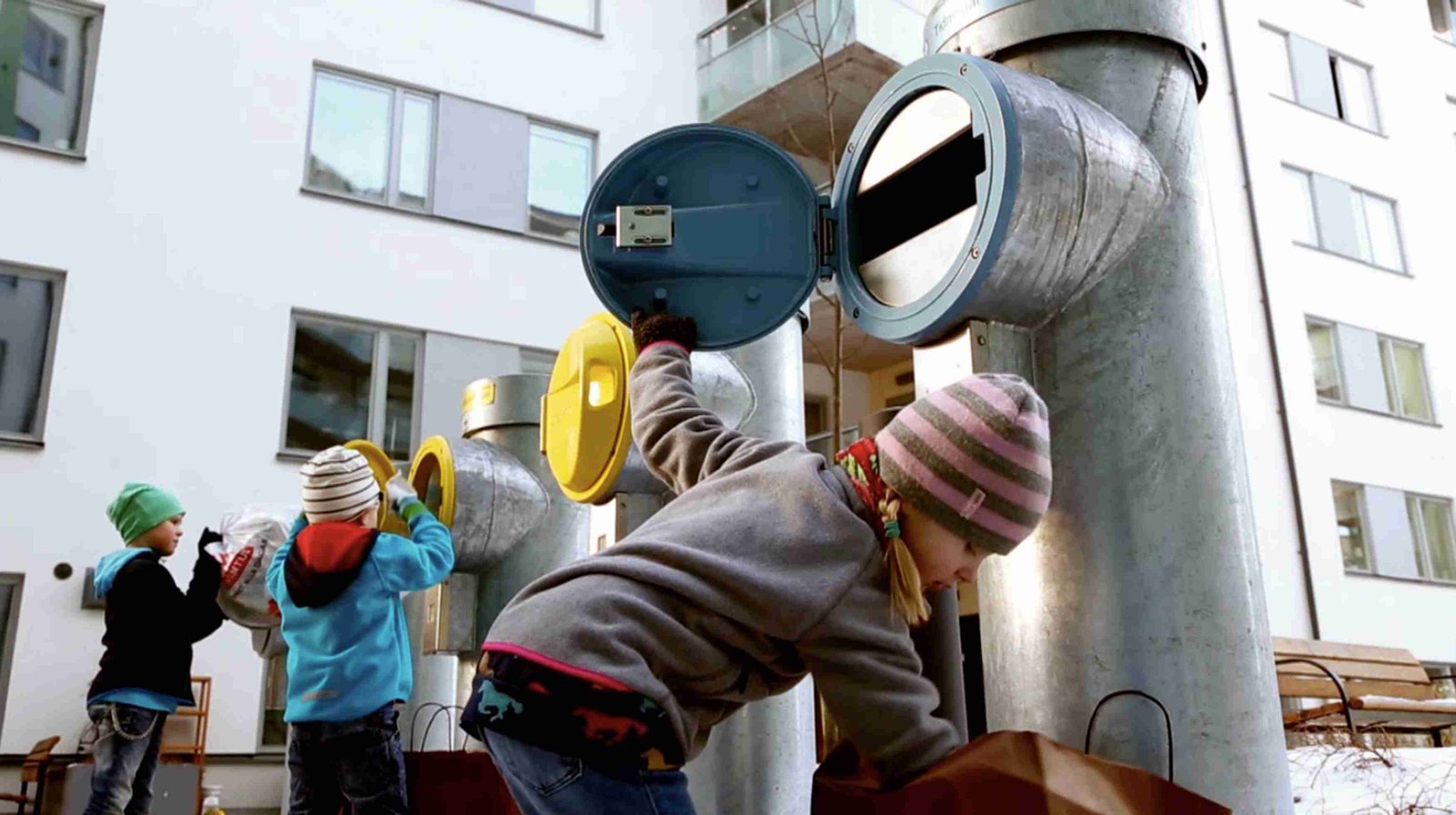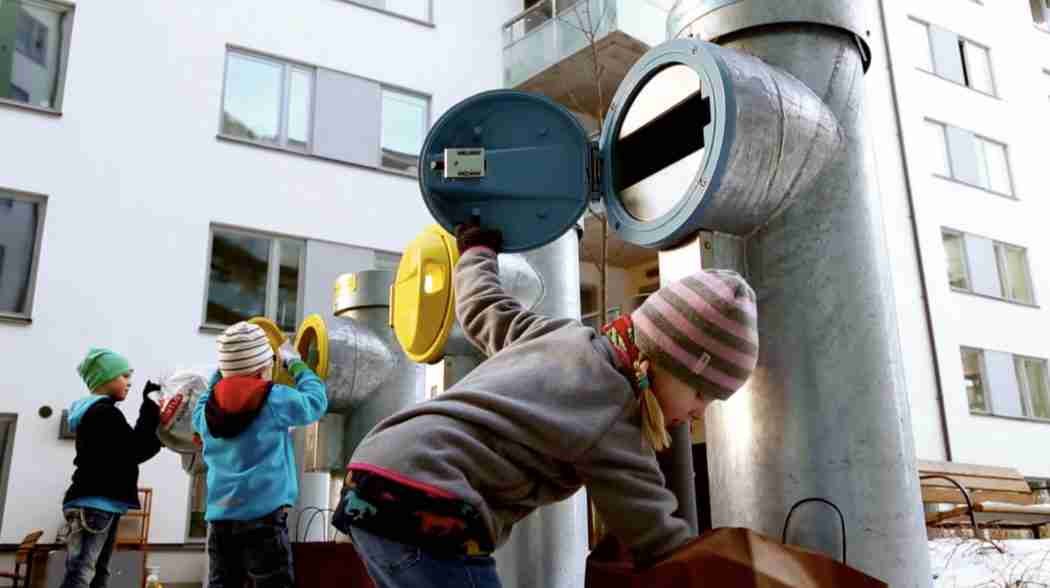Sweden’s recycling is so revolutionary; the Nordic Nation ran out of the trash and had to import garbage from other nations to keep its recycling plants running. What lessons can India learn from the Scandinavian country

It’s summertime in Sweden and Palle Stenberg, the co-founder of Gothenburg based Nudie Jeans, is busy doing his daily chores. Despite having a super busy life full of business and household chores, Palle has volunteered to be a local guide to Dan, his friend and a business partner from Australia. Around 6:30 am both of them all set to hit the road but not before finishing the most critical job of the day, a chore that Stenberg has done every single day without fail for three decades. He dumps the neatly segregated packs of the waste – paper, plastic, glass, metal, and biodegradable waste – into their respective recycling centres, some 300 metres away from his house. Dan is mighty impressed by Sweden’s incredible Recycling Revolution. And, so did I when I first visited the country.

In September 2019, I got an opportunity to learn first hand about Sweden’s incredible journey of transforming trash to treasure when I attended the Adventure Travel World Summit in Gothenburg as an official media delegate. The Swedish city situated on the west coast of the country is no ordinary city – it has been voted the most sustainable destination in the world for four years in a row.
Although adventure brought me to the country, recycling caught my attention. Sweden is so ahead in the waste management curve; it has run out of the garbage, and for several years, it has been paying money to import trash from other nations to keep its recycling plants functioning. I wasn’t surprised to know that less than one per cent of Sweden’s trash is sent to landfills and 99% of Sweden’s waste is recycled. Through efficient waste management Global Citizen Sweden is able to heat one million homes and provide electricity to 250,000.

My initial research both intrigued as well as motivated me to demystify Sweden’s incredible journey of Transforming Trash to Treasure. Through this story, I was able to meet different stakeholders from different fields – some were from waste management companies others from tourism boards, manufacturers, and most importantly, the locals. And this is what I found.
Harbinger of the Recycling Revolution
Sweden was one of the first countries in the world to realise that non-renewable resources will become scarce, and climate change will become a big question mark to our existence. Therefore, it started scouting for sustainable alternatives early on. In the mid-20th century, when sustainability and climate change were alien words, it laid the foundation of the Recycling Revolution. It started investing in waste management to generate electricity from the trash. By doing so, it killed two birds with one stone – reduced its reliance on fossil fuels and also significantly brought down its carbon footprint. As per the official estimate, the greenhouse gas emissions in Sweden are projected to fall by 76% by 2020 as compared to levels in 1990. Experts say that Sweden’s number one goal at the moment is to become the world’s first fossil-fuel free nation as part of their commitment under Roadmap 2050.

However, this success blueprint wasn’t created overnight. Katarina Thorstensson, the Sustainability Strategist at Gothenburg & Company, explains,
“Where Sweden and Gothenburg are today, is a result of many years of hard work on environment education at a national level as well local level. And, in some way, it is a cultural thing. We care about people and planet, and therefore we are conscious about efficiently using the resources. We actively reduce, reuse and recycle resources.”
Most importantly, the Swedish government should be credited the most for the success of this mammoth task as it was the one that brought all the stakeholders together to create a collaborative environment. Thanks to the joint efforts of all the parties, a big behavourial change was initiated and successfully achieved in Swedish citizens – from having a will to recycle to actually doing it.
Rehauling the Education System
Swedish government realised that if they want a long-term sustainable solution to their waste management problem, they’ll have to educate the kids about the importance of environmental issues and sustainable living from an early age. In schools, children were taught to recycle, making it a way of life in Swedish communities. Specialised training was given to the teachers to engage children in practical activities, like creating their own paper or inculcating reduce-reuse-recycle habits.

My 41-year-old local friend Kicki Lind recaps her childhood days. She starts by saying,
“Keeping nature clean is in our veins. I grew up with the “Keep Nature Tidy” campaign and back in school, where we learnt on why and how we must all make sure never to leave any trash behind. And, if someone did leave by mistake, we were taught to pick up their trash.“

Good environmental education wasn’t left at the theory level; it was backed up with clearcut actions. Strict regulations, policies, structures and a robust infrastructure was developed for people to teach waste sorting and recycling habits effortlessly. To discourage unsorted waste issue, the Swedish Government started levying higher waste tariffs on unsorted waste and providing almost free waste tariffs for bio-waste.
Simplifying the Recycling Process
Sweden’s incredible journey of Transforming Trash to Treasure would not have been so successful if recycling wasn’t made easy, accessible and convenient. Swedes don’t have to run from pillar to post to find a recycling station; they can be seen as close as 300 meters from any residential area. Everyone segregates and dumps their waste as per the waste type. You will never find paper in plastic waste bins, or metal in glass or lightbulbs into batteries recycling bins. There are specialised recycling centres outside cities for larger items such as furniture or electronics.

Beyond recycling – Sustainable Living
Lately a new movement – Circular economy (Reduce, Reuse & recycle) – has become quite popular in the country that encourages people to reuse everything from food, medicines, clothing, and gadgets for longer duration and in smarter ways. In the Swedish culture, wastage is frowned upon. Using this insight, a food app called Karma was launched, which saves food from being wasted by letting the consumers find delicious surplus food from restaurants, cafes and grocery stores at half the regular price. A win-win situation for both – users pay less for good food and businesses make money on the surplus food that would otherwise go waste.


A similar approach is applied by the pharmacists too – 43% of unused medicines are returned to the pharmacists instead of being tossed into a bin.
And, it isn’t just the food and pharma industries who are thinking out of the box to follow the philosophy of Reduce, Reuse and recycle. The apparel industry, which is said to be the second biggest contributor to carbon emissions, is reinventing itself too. The used clothing market in Sweden has grown manifolds over the past few years. Vintage fashion has become such a huge trend that established chains are competing with small vintage boutiques selling second-hand items. Walking through the city centre of Gothenburg, I came across many stores selling second-hand apparels, renting clothes and using many innovative ways to become more sustainable.
One brand that impressed me the most was Nudie Jeans. Not only it is the world’s first 100% organically manufactured denim brand, but it comes with a lifetime repair warranty. And, you can even use their buy-back option if you ever get bored with your denim (though I doubt that would ever happen) and want to try something new. Nudie Jeans was the first brand to introduce the concept of coolness and sustainability in a denim brand.

Another store that is doing a commendable job in sustainable fashion is a designer brand called Atacac Fashion Studio. They are the pioneers in a unique style of pattern making in which they use the 3D modelling to reinvent the design, production and selling process. Hannah Holden, the communications and sales manager of the company, shared her company’s core philosophy,
“Whenever we design anything new, our aim is not to design that is just following a trend for a while. Why should anyone throw something away that looks amazing, always? Take, for example, a leather jacket or other classic styles, you have them forever because they always look good.”
Despite being home of fast fashion brands like H&M, the fashion industry in Sweden is changing for better through a more collaborative and creative approach. Unlike other countries, here copying is not considered derogatory but praised, if sustainability is at its core. Also, using second-hand products is not considered cheap but make you appear environmentally-conscious. No wonder, I found so many second-hand chain stores like Myrona, Stadsmissionen, Emmaus and Beyond Retro throughout Sweden.

Whether it was talking to the officials, business owners or normal people, one common factor stood out – Sweden is a nature-conscious nation where the sustainable approach to business and societies is not a mere lip-service but a part of daily management and long-term sustainability goals. In Sweden, two big things facilitate all the small things – samarbeta (openness to innovation), and transparency meaning low corruption at all levels. Perhaps that’s the secret behind why Sweden remains the world’s most sustainable country year after year.
Further reading: Do check out this article if you are interested in knowing more about sustainable accommodations and how to find them.
Lessons India can learn from Sweden’s incredible journey of Transforming Trash to Treasure
About 60 million tonnes of trash is generated every day in India, and about 45 million tonnes of waste remains untreated. It’s high time India takes some strong actions; otherwise, our own garbage will drown us! While it might be too ambitious for India to reach where Sweden currently is due to high illiteracy, poverty and reluctance from the top, it’s not impossible. The government can learn from Sweden and follow the ‘circular economy’ model to minimise the waste and ensure maximum recycling.
Sweden’s secret of turning trash to treasure is an open secret. It is totally up to us how we can use it to make the Swach Bharat dream come alive.
- Policies and Infrastructure: Most importantly, our government has to come up with strict policies and develop a robust infrastructure to grow the ‘circular economy’ in India. The carrot and stick approach has to be used to minimise waste and ensuring maximum recycling.
- Waste Segregation: Efficient waste management cannot happen without proper segregation of waste. Therefore steps have to be taken at ground level until the last mile to educate households and institutions to segregate their waste before being sending it to recycling plants. Perhaps, rag-pickers can be utilised to sort waste.
- Recycling: Make recycling convenient by constructing recycling centres near every locality to process different kinds of waste.
- Community Engagement: A behavioural change cannot happen without community participation. We can engage communities by launching incentive-based schemes to promote recycling.
- Environment Education: Last but not least, the most fundamental shift India should bring is to demonstrate actively (not just a passive chapter on the environment) the benefits of sustainable living in schools from an early age. They should daily practice the 3Rs of the circular economy – reduce, reuse and recycle – then only it will become a part of their DNA. We can rope in some young role models like Parth Bhatt. A grade-10 student and an aluminous of UN Climate Change Learning Partnership (UNCCL) who has been awarded by the likes of UN for his works in fields of science and technology for climate change mitigation.
If India can do these five things, our country will not only become Swachh Bharat but will also get rid of many other allied problems such as unemployment. Imagine if we recover just 15 per cent of daily waste we can employ about 500,000 rag-pickers and provide electricity for nearly two million homes.
Further reading – Published in
- The Hindu Businessline: Sweden, a zero-trash heaven
- The Hindu Businessline: A day with Lovis the reindeer
- The Tribune: Transforming trash into treasure, the Swedish way
- The Tribune: Of Sami and reindeer, and their way of life
- Sakal Times: Hiking with the reindeer
Inspired? Pin these to your Pinterest boards



Disclaimer
I was invited as a hosted media to attend the Adventure Travel Summit Sweden 2019 by Visit Sweden. All the views expressed above are based on my personal experiences and conversations I had with the mentioned parties. Images used are either shot by me or provided by the Tourism Board. Please do not copy anything without written permission.






It’s not just India that could learn from Sweden. Here in the Netherlands we have the same sort of bins for separating waste … except plastic containers. They apparently come in different types and can’t be recycled together, so they involve even more separation. Only the most dedicated people do it, because those bins are not nearly as common, so you have to travel out of your way for it. We don’t generally do it, but instead we do our best not to buy plastic packaging. Plastic drinks bottles – but not all of them – can be recycled at the store where they were bought, but not laundry bottles, shampoo bottles, etc. etc. If the bins were as nearby as the paper and glass bins, many more people would use them, I’m sure. I think your point about culture change is very important, though, and the way to do that, as you said, is in schools.
Sweden is indeed one of the thought leaders when it comes to the Circular Economy or the 3R’s – Reduce, Recycle and Reuse. I remember reading about a ton of innovative things that Sweden was experimenting with and setting an example for the world, back when i was working as a Sustainability Analyst. Reading about all this is one thing, but observing it first hand, gives a whole lot of practical learning, that helps shape the thoughts about sustainability and recycling in general.
It is certainly great – however, I think that most European countries are doing their share of recycling. We all have these different bins. At least in Germany, we also have this deposit system for cans and bottles – looks exactly like the machine on your picture 🙂 First, we all were unnerved that we had to collect those bottles and cans and carry them to the supermarket; but you get used to it. Also, it’s a nice way of supporting the poor and homeless: There are specially designed garbage bins where you leave your empty bottle on sort of a tray. This way, the collector does not have to reach into the garbage bin.
Sweden’s journey in recycling waste is incredible. There are so many lessons that India needs to learn here. The system is fabulous but it is backed with commitment and participation by the citizens, which is really crucial for success. To achieve such results in India, every individual needs to take ownership and participate, this can only be done by awareness and education at all levels.
Wow, this is so interesting to read about. The US could learn from Sweden too! We have recycling efforts, but some are better than others about it. I hope that more countries can follow Sweden’s lead.
Only 1% going to landfill certainly sounds impressive. I wish all countries would be so forward-thinking about sustainability. In Australia you can recycle most things but you have to go to several different locations for all the different items, I doubt a majority of people here are recycling batteries, soft plastics, unwearable clothing etc. Also, all the different recycling programs are not communicated by local councils so you have to be proactive to try to find out where you can recycle certain items, and often the information is nonexistent or difficult to find. GO Sweden!
Hope India learns from the same too, did you capture this when you were in Sweden? I so want to go there, I feel it is an incredible place!!
Fascinating, I live in Malta and I wish they would follow this initiative. Just trying to stop people from throwing rubbish in the harbour is hard enough!
Canada hS implemented a lot of recycling rules as well. There is now a limit on how many actual garbage bags that can go and it’s only every 2 weeks now. This forces more recycling. We also have the recycling bind at some stores and restaurants, but I wish there were more of them.
Thanks for sharing the best travel exciting journey to Sweden’s incredible journey of transferring trash to treasure.